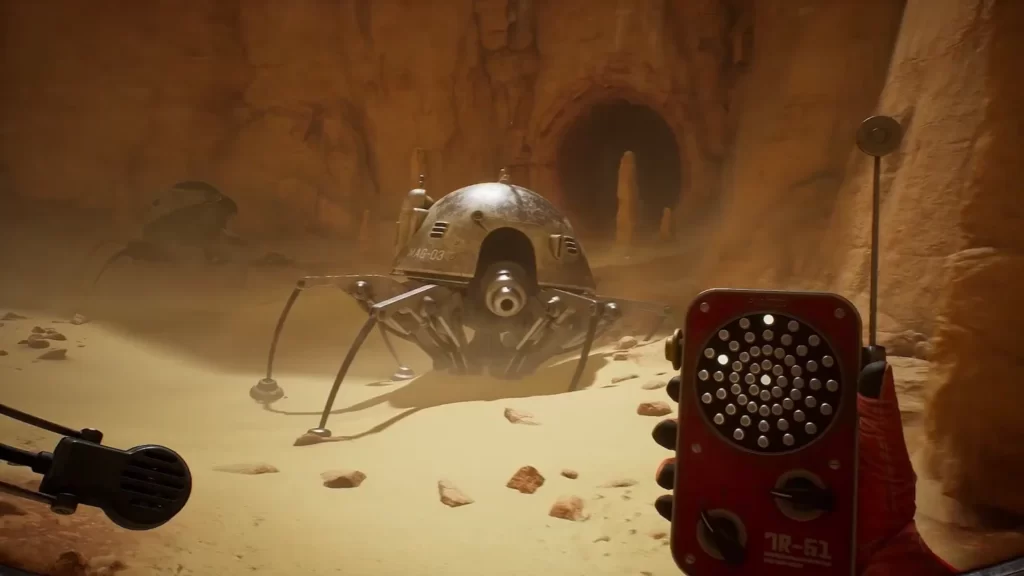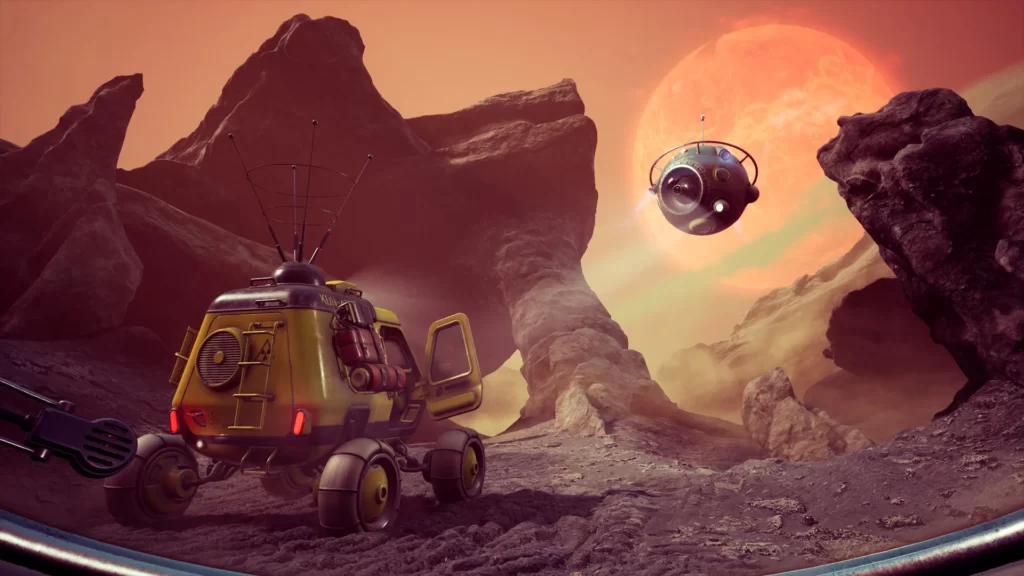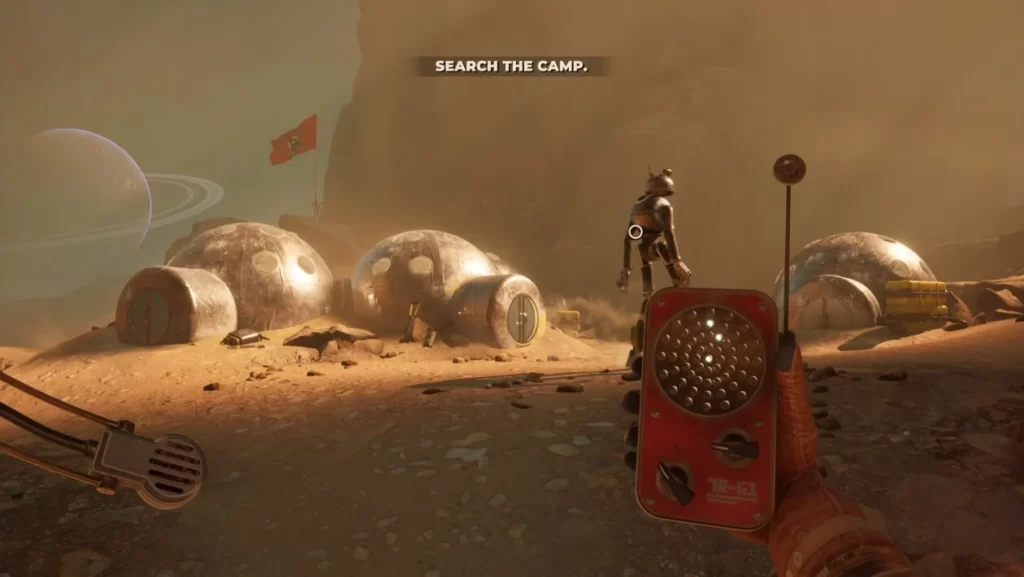The Invincible presents a visually stunning and intellectually engaging adaptation of Stanislaw Lem’s novel, yet it appears to require some refinement in terms of editing.
While contemporary space-themed games often feature little green aliens, lightsabers, and complex spaceship designs, The Invincible, developed by Starward Industries, takes a distinctive approach. Instead of focusing on typical sci-fi elements, The Invincible transports players to an era when space exploration narratives delved into human responses to reaching the stars. Drawing inspiration from Stanislaw Lem’s novel of the same name, Starward’s inaugural narrative thriller brings classic hard science fiction to life through captivating visuals. However, the game encounters some technical issues and exhibits a degree of superfluous content.
The most notable aspect of The Invincible is its deliberate, narrative-centric game design, which lacks extensive gameplay mechanics. The game takes a commendable and refreshing departure from the prevalent emphasis on violence in contemporary video games. However, it introduces a different challenge by offering minimal gameplay diversity. Throughout its approximately seven-hour duration, The Invincible features minimal puzzles, relying instead on player interactions, communication via comms, decision-making, and a prolonged exploration of the surface of Regis III. While the game may seem like a high-budget production, it possesses the essence of a relaxed interactive fiction indie game, a crucial consideration for prospective players.

Fortunately, The Invincible compensates for the absence of intricate gameplay mechanics by prioritizing its narrative, ensuring the creation of vibrant and likable characters. As previously mentioned, Starward’s The Invincible takes inspiration from Stanislaw Lem’s eponymous novel. While Lem’s original work delves directly into themes of humanity’s interaction with technology and our position in the universe in a more straightforward, hard sci-fi fashion, Starward’s adaptation adopts a more cerebral approach to the central mystery. It unfolds as a gripping thriller, occasionally inducing a sense of unease, yet remaining within the grasp of general audiences.
The core narrative follows Yasna, an amnesiac biologist who arrives on the distant planet of Regis III after a mission deviation separates her from her crew. As Yasna grapples with the challenge of understanding the fate of her team, she discovers that only Novik, the Astrogator, responds on comms. Her task becomes unraveling the mysteries surrounding her team’s disappearance and finding a safe escape from Regis III.

Without revealing spoilers, Yasna swiftly learns that Regis III harbors something unexpected, taking a cue from the aesthetics of ’60s hard sci-fi. Enthusiasts of speculative biological scenarios will find the narrative particularly intriguing, offering a unique twist on conventional expectations from sci-fi thrillers.
Starward deserves commendation for their skillful portrayal of the main characters, particularly Yasna, who emerges as a standout protagonist. Portraying Yasna is a joy, as she stands out as one of the most endearing lead characters of the year. Her dialogue infuses a sense of wonder and exploration into the narrative, successfully portraying her as a cheerful biologist who may have second thoughts about embarking on this mission. However, players have the flexibility to shape Yasna into a more cynical and self-centered character based on their dialogue choices. In contrast, Novik serves as an effective foil to Yasna, consistently questioning her motives and observations while attempting to decipher the mysteries of Regis III alongside her. The narrative development involves significant decision-making regarding how players want these characters to interact and evolve, and regardless of the choices made, the sequences feel authentic and lifelike, thanks to astute writing.

Furthermore, The Invincible offers an immersive experience, drawing players into the captivating world of Regis III. Despite its smaller budget and team, the game boasts impressive graphics that exceed expectations. Regis III is both foreboding and breathtaking, featuring dust storms that sweep across the landscape, enveloping it in particle effects, and picturesque sunrises that enhance the dusty cliffs and sandy dunes with precisely placed lighting. The first-person point of view, combined with the stunning landscapes of Regis III, creates a palpable sense of presence throughout the experience, easily captivating players.
Regrettably, The Invincible encountered some noticeable technical glitches that intermittently disrupted the immersive experience. While minor animation issues can be overlooked, a significant drawback is The Invincible’s absence of manual save options, relying instead on predetermined checkpoints with extended intervals between them. This oversight becomes apparent when players need to pause the game, only to return and redo the last fifteen to twenty minutes of dialogue and exploration to resume from where they initially intended to stop.

The issue is more pronounced in expansive areas where players explore using the rover vehicle without the ability to save progress until reaching an arbitrary checkpoint. The most frustrating instances occurred when the game experienced bugs, such as the Detector tool malfunctioning, forcing a save reload and causing substantial progress loss, despite no fault on the player’s part. Although this may seem like a minor grievance in theory, considering the significant portions of the game involve stationary moments with dialogue, navigating when it was acceptable to pause playing without risking progress loss could lead to frustration.
When considering The Invincible in its entirety, there is a lingering sense that Starward Industries could have expanded on the game’s premise or, alternatively, streamlined its existing elements for a more cohesive experience. The game presents a contrast where some of its most compelling moments unfold in narrative sequences where players have no control, followed by gameplay portions that feel like excessive filler to provide activity. The Invincible, with its minimalist gameplay approach, at times struggles to make the interactive segments feel truly meaningful.

Furthermore, while the main story’s decision-making sequences hold significance, it appeared that minor decisions often led to similar outcomes, with the ending being the primary aspect altered based on player choices. The game’s attempt to achieve AAA-like spectacle and an open-world ambiance occasionally results in bloating an otherwise well-paced and tightly crafted experience.
Despite a few technical glitches, checkpoint challenges, and a potential mismatch in scale for an intimate game, The Invincible remains an enjoyable journey. It breathes life into ’60s sci-fi literature, catering to enthusiasts of hard science and those who appreciate the retro sci-fi aesthetic. Casual fans can still find plenty to appreciate, recognizing that The Invincible prioritizes immersing players in a narrative-driven world rather than adhering to the typical space-faring adventure trope. Once The Invincible captures the player’s attention, it becomes a thrilling, thought-provoking narrative experience that is well worth the journey.
Also Read: Avatar: Frontiers of Pandora Review


